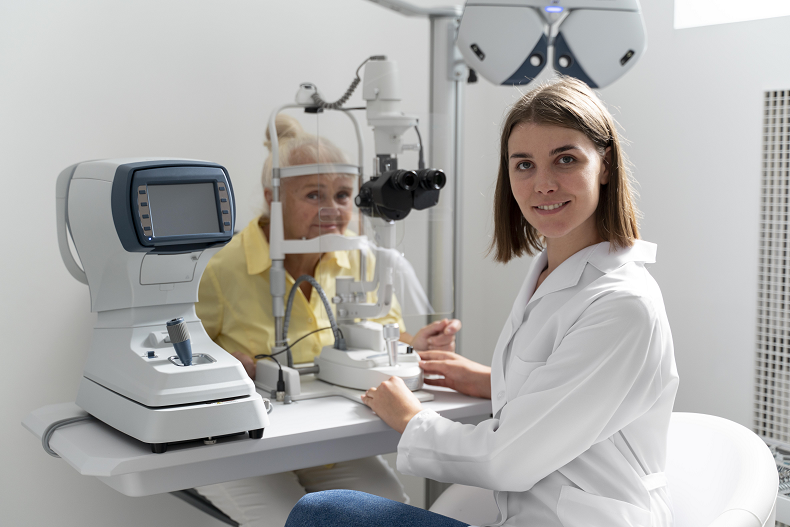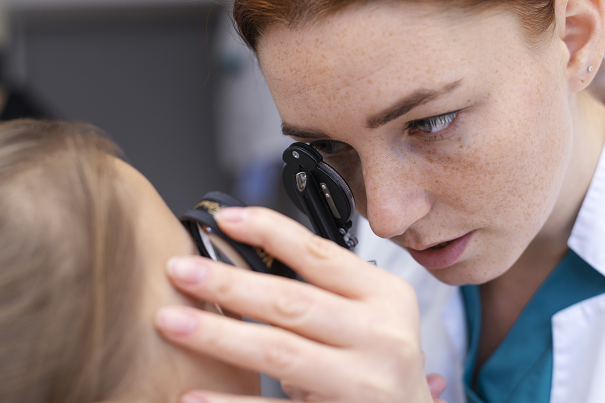What is Laser Surgery?
Laser surgery is a laser procedure applied to the cornea layer of the eye to get rid of glasses or lenses. With this process, the shape of the cornea is changed, allowing the person to get rid of their glasses or lenses. This procedure can be applied to people with myopia, astigmatism or hyperopia.
Who Can Have Laser Surgery?
• Those who are over 18 years old and wear glasses or contact lenses
• Those whose eye grades have not changed in the last 1 year or have changed less than 0.50
• Those who are nearsighted up to -10 degrees
• Those with hyperopia up to +4
• Those with astigmatism up to -6
• Those with suitable corneal structure and sufficient thickness according to the corneal topography
• Those who do not have any other disease in their eyes (cataract, dry eye, eye pressure, etc.)
• Those who do not have systematic diseases such as diabetes, rheumatism
• Those who are not pregnant or breastfeeding.
• In addition to all these, a detailed pre-operative examination will determine whether your eye is suitable for laser treatment by your doctor.


Laser process is performed using 3 main techniques:
NoTouch or PRK Method In PRK (Photorefractive Keratectomy) or NoTouch laser method
After the epithelium (the outermost layer of the cornea) is removed, the laser is applied directly without removing any layer from the cornea. At the end of the procedure, protective contact lenses are worn. There may be burning, stinging and pain in the first days. On the 4th day, the protective lens is removed. Within days, vision becomes clear. In the long term, there is no trace of laser treatment in the eye. This method is applied to people with glasses or lenses up to 3-4 sizes or patients with thin corneal thickness.
FemtoLASIK (iLASIK) Method
In this technique, first, a thin layer (flap, valve) is removed from the corneal surface using a femtolaser. Immediately afterwards, a laser is applied to the cornea for correction. It is important to use a femtolaser, not a blade, to remove the film (bladeless laser). Some complications may develop in operations performed with a knife. This method can be used for all eye numbers where the corneal thickness is sufficient. Unlike the NoTouch method, in this method, there are no complaints such as pain, burning and watering after the surgery, clarity is gained earlier and the person can return to work the next day.
SMILE Method
It is a new generation laser method. With the help of a femtosecond laser, a thin leaflet (a disc-shaped tissue) is created in the cornea and this layer is removed by the doctor by pulling it from the side through a gap of about 2 mm. There is no need to lift a flap as in iLASIK. It is a bladeless process that is only done with a laser. Since the flap (valve) is not removed, the structure of the cornea is slightly impaired and remains strong. The probability of developing dry eye is very low. It is a suitable treatment method for athletes and other occupational groups who are at risk of being exposed to impact and pressure. Light sports can be started immediately, heavy sports can be started after 1-2 weeks.
What is Keratoconus?
Keratoconus disease is the thinning of the transparent corneal layer, which is located in the front of the eye, and its steepening forward. Forward cambering of the cornea may cause myopia and astigmata, decreased vision, and decreased vision that cannot be corrected with glasses. In advanced stages, corneal transplantation may be required.
Keratoconus usually occurs in both eyes, although one eye may be more affected than the other.
Crosslinking Treatment (Crosslinking)
It is a medical treatment method using ultraviolet light and riboflavin (vitamin B2) drops. In this way, the bonds between the collagen fibers in the corneal layer become increasingly stronger.
The aim of this treatment is to prevent further progression of keratoconus. The procedure is performed by anesthetizing the eye with drops. It takes about 40 minutes. It is a painless procedure. At the end of the procedure, protective contact lenses are inserted and removed after 4 days.
According to the studies, it was determined that the progression of the disease stopped or very slowed down in almost all of the patients with crosslinking treatment. In fact, it has been shown that visual acuity improves in 60-80% of them.
Habitat Health Centre brings you the most efficient treatments for your eye health by the hands and experience of its specialist fellows of the European Board of Ophtalmology and awarded by the European Board of Ophtalmology, using the most advanced state-of-the-art technology.
We think the measurement and its reading is the most important step of all treatments because it underpins most clinical decisions. It forms the basis of diagnosis, prognosis and evaluation of the results of medical intervention. Efficient, safe and accurate medical care is based on collection and interpretation of data.
We offer our treatments for eye diseases in two categories:
SMART LENS SURGERY
(prices range from 2.300 € to 2.750 € per eye, depending on the type of lens)
REFRACTIVE SURGERY by EXCIMER LASER
(prices range from 1.700€ to 4.000€ for both eyes, depending on the type of intervention)


| Here is some videos for your aesthetic treatments. You can also visit our aesthetic BLOG page. |
|
|
|